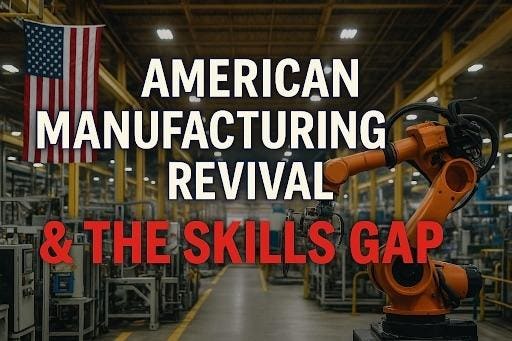Addressing the skills gap
FictivA few weeks ago, I had the honor of welcoming supply chain and manufacturing leaders to the inaugural U.S. Manufacturing and Revitalization Summit. This gathering underscored a pivotal moment in American industry—a manufacturing resurgence fueled by strategic investments and reshoring efforts. While this is certainly driven by legislation like the CHIPS and Science Act and the Inflation Reduction Act, tariffs are clearly having an impact here.
According to the 10th Annual State of Manufacturing and Supply Chain Report, the vast majority of manufacturing and supply chain leaders consider onshoring critical to their overall supply chain strategy.
Onshoring strategy
FictivPrior to the new U.S. Administration, the same leaders were incresaingly concerned about global trade tensions and tariffs.
Fictiv
FictivInvestments in U.S. Manufacturing
Despite these concerns, recent years have seen a dramatic uptick in U.S. manufacturing activity. According to the National Association of Manufacturers (NAM), investment in construction for manufacturing projects hit record highs in 2023, especially in sectors like semiconductors, clean energy, and electric vehicles.
Major brands like GM, Intel, Samsung, Honda, and Ford are constructing or expanding domestic manufacturing plants. Apple is reconfiguring supply chains to rely less on China. Kraft Heinz recently announced a $3 billion investment in U.S.-based manufacturing—their largest in decades. These moves signal that U.S. manufacturing isn’t just reviving; it’s repositioning for long-term strategic growth.
But what’s especially striking is how this growth reflects a broader shift in the global economy. Companies are no longer simply chasing low costs abroad—they’re looking for stability, reliability, and resilience. This has made manufacturing a national priority once again and brought renewed focus to one of the sector’s most stubborn challenges: labor shortages.
The Skills Gap
Despite the surge in manufacturing investments, the industry faces a daunting talent shortage. A study by Deloitte and The Manufacturing Institute projects that 2.1 million manufacturing jobs could go unfilled by 2030 due to a lack of skilled labor. This gap is not merely a numbers issue; it’s about the evolving nature of manufacturing roles.
Modern manufacturing demands proficiency in areas like CNC machining, robotics, and automation. However, outdated perceptions persist, painting manufacturing as low-tech and low-paying. This misalignment deters younger generations from pursuing careers in the sector, exacerbating the talent shortage.
Changing Perceptions: The Role of Education and Partnerships
Formula Electric Berkeley Team
Formula Electric BerkeleyTo bridge the skills gap, it’s imperative to reshape the narrative around manufacturing. Today’s manufacturing environments are clean, technologically advanced, and offer lucrative career paths without necessarily requiring a four-year degree.
Partnerships between industry and educational institutions play a crucial role in this transformation. Programs like Formula Electric at Berkeley exemplify this synergy. With support from companies like Fictiv, engineering students design and build electric vehicles, gaining hands-on experience in advanced manufacturing. These initiatives not only equip students with practical skills but also showcase the innovative nature of modern manufacturing.
Green manufacturing and cleantech clearly resonate with the next generation’s focus on meaningful work and environmental impact (90% of Gen Z and Millennials believe it’s essential that their work reflects these values).
Automation: Complementing Human Talent
The rise of automation and AI in manufacturing is often viewed with apprehension. However, automation should be seen as a tool that complements human labor rather than replacing it. By automating repetitive tasks, workers can focus on more complex, value-added activities. AI is already integrated into central manufacturing tasks, including inventory management, quality control, and product design.
Fictiv
FictivMoreover, the integration of AI and automation creates new roles, such as robotics technicians and systems analysts, requiring a blend of technical and digital skills. Investing in training programs to develop these competencies is essential to ensure that the workforce evolves alongside technological advancements.
Global Lessons: Building a Resilient Workforce
Looking globally, countries like Germany and India have successfully implemented apprenticeship and vocational training programs aligned with industry needs. These models offer valuable insights for the U.S. in developing a robust manufacturing workforce.
In the U.S., companies like Siemens are pioneering inclusive workforce development strategies. At their Fort Worth facility, Siemens has created hundreds of jobs, focusing on training individuals without prior factory experience through innovative programs led by former educators. Such approaches highlight the potential of comprehensive training programs in addressing the skills gap.
Supply Chain Strength Through Regional Flexibility
One often-overlooked aspect of the labor story is geography. The U.S. manufacturing resurgence isn’t happening in just one location—it’s unfolding across a distributed network of regional hubs.
This regional diversification plays a critical role in helping companies manage labor shortages. By operating across multiple locations (like China, Mexico, and India), manufacturers can better align talent strategies with regional strengths. Some regions might be ideal for high-mix, low-volume prototyping, while others excel in large-scale production or access to specific skill sets.
The Path Forward: A Collaborative Effort
Addressing the manufacturing skills gap requires a concerted effort from industry, education, and government. Key strategies include:
Modernizing education. Integrate advanced manufacturing topics into curricula and promote STEM education to prepare students for modern manufacturing roles.
Public-private partnerships. Foster collaborations between companies and educational institutions to provide hands-on training and real-world experience.
Reskilling and upskilling. Implement programs to continuously develop the skills of the existing workforce and adapt to technological changes.
Changing perceptions. Launch campaigns to redefine manufacturing careers, highlighting innovation, technology, and sustainability.
Conclusion: Seizing the Opportunity
The resurgence of American manufacturing presents a unique opportunity to redefine the industry and its workforce. By addressing the skills gap through education, partnerships, and a shift in perception, we can build a resilient, innovative, and inclusive manufacturing sector.
The future of manufacturing lies not just in advanced machinery but in the people who operate, innovate, and drive the industry forward. It’s time to invest in that future.
Read the full article here


